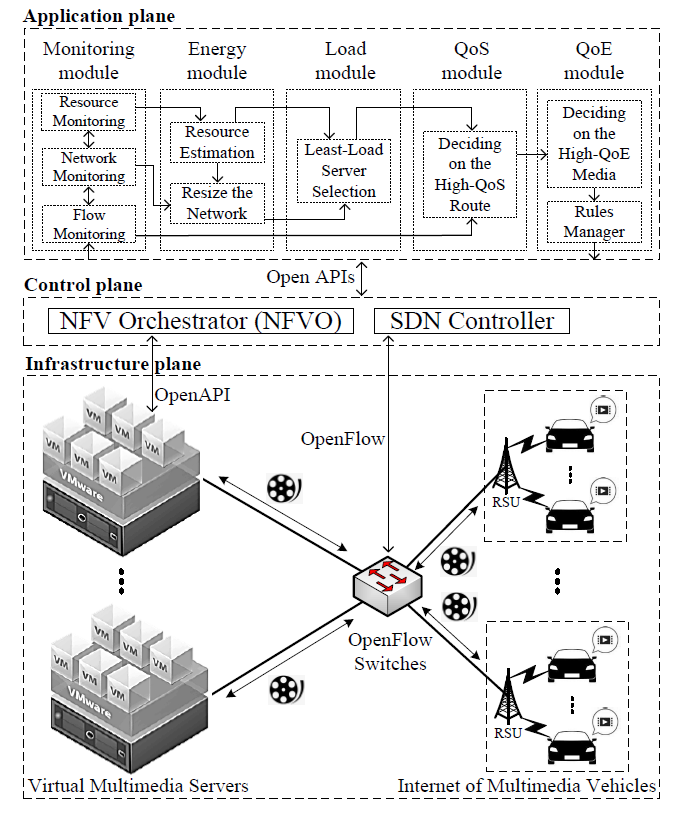
Due to the rapid growth of the Internet of Vehicles (IoV) and the rise of multimedia services, IoV networks’ servers and switches are facing resource crises. Multimedia vehicles connected to the Internet of Things are increasing; there are millions of vehicles and heavy multimedia traffic in the IoV network. The network’s scarcity of resources results in overload, which, in turn, leads to a degradation of both Quality of Service (QoS) and Quality of Experience (QoE). Conversely, when resources are abundant, it leads to unnecessary energy wastage. Managing IoV network resources optimally while considering constraints such as Energy, Load, QoS, and QoE is a complex challenge. To address this, the study proposes a solution by decomposing the problem and designing a modular architecture named ELQ2 . This architecture enables simultaneous control of the mentioned constraints, effectively reducing overall complexity. To achieve this objective, Network Softwarization and Virtualization concepts are employed. This modern architecture allows dynamically adjusting of the scale of the resources on demand, effectively reducing energy usage. Additionally, this architecture provides some other potentials, such as “the distribution of multimedia traffic among servers”, “determining the route with high QoS for traffic”, and “selecting a media with high QoE”. A real test field is provided by Floodlight Controller, Open vSwitch, and Kamailio Server tools to evaluate the performance of ELQ2 . The findings suggest that the utilization of ELQ2 holds promise in reducing the count of active servers and switches via effective resource management. Additionally, it demonstrates enhancements in various QoS and QoE parameters, encompassing throughput, multimedia delay, R Factor, and MOS, accomplished through load balancing strategies. As an illustration, the deployment of flows has achieved a commendable success rate of 95% owing to the utilization of SDN-based and comprehensive management practices encompassing all network resources